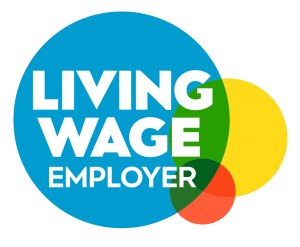Among the stained glass windows in the antechapel of Wadham College, Oxford, lie the arms of William Burge. Burge married Helen Grace Murray, through whom he came into the possession of a coffee plantation and the one hundred and thirty slaves who lived on it.
Among the stained glass windows in the antechapel of Wadham College, Oxford, lie the arms of William Burge. Burge was a Somerset man born to a clothier family in Castle Cary on 18 April 1786. He attended Wadham from 1803 to 1806, and was called to the bar at the Inner Temple in 1808.

Instead of embarking on his legal career in England, however, he joined the colonial service in 1809 and was posted to Jamaica. In Jamaica, Burge married Helen Grace Murray, through whom he came into the possession of a coffee plantation and the one hundred and thirty slaves who lived on it. Although the slave trade had been formally abolished in the British Empire in 1807, slavery itself was not abolished until 1834. In the meantime, Burge’s legal career began to take off. He steadily climbed the ranks and was appointed as the island’s attorney-general in 1816.
After a decade of service Burge’s career took a rather different turn. He returned to England in 1828 to accept an appointment as colonial agent for Jamaica. This was a highly desirable post, which carried a lucrative annual salary but taxing responsibilities. Most importantly, Burge was to oversee communication between the Jamaica Assembly and the Colonial Office, with a view to prevent imperial interference into the affairs of the British settler community. This was a challenging role that required good negotiation skills. To supplement his newfound political influence further, Burge secured informal representation for the island in the House of Commons following his election as Tory MP for Eye in 1831.[1] By this time Burge was also entrusted as a spokesman for the wider West Indian interest, as the campaign to emancipate British colonial slaves had gathered real momentum.

In campaigning against emancipation Burge was forced to defend slavery itself. He claimed he was neither ‘the advocate or the apologist of slavery’, yet he deployed every argument available to resist the passage of emancipation.[2] He began by claiming that the practice of slavery facilitated the civilizational improvement of Africans through moral and religious instruction. He also stressed severe economic consequences for the British manufacturing industry should emancipation be granted. He then warned that effecting emancipation risked provoking rebellion among the slave population and, later, from the slave holders themselves.
Even Lord Stanley’s announcement of a scheme for emancipation in May 1833 did not deter Burge. He insisted that the British government did not have the legal right to impose emancipation, pointing to the constitutional liberties of the settlers.[3] But despite his best efforts, the government’s decision to provide £20 million in compensation to slave owners finally succeeded in persuading them to accept emancipation. The Slavery Abolition Act received royal assent on 28 August 1833.
But despite his ultimate failure to prevent emancipation, Burge’s career reminds us that defending slavery remained a serviceable position, although the arguments in its favour became increasingly limited and dogmatic. This means that the achievement of emancipation was not inevitable. Recent research has shown that Britain only became an ‘anti-slavery’ nation after 1833. Until emancipation was passed, defending slavery was not only viable but in some circumstances very persuasive and even popular. Proslavery ideology had been central to intellectual debates in Britain, particularly in economics. [4] Had the circumstances been more favourable, and had slave owners – particularly those resident in Jamaica – been prepared to back Burge and take on the government, the outcome may have been different.

What therefore should we make of Burge and his continuing presence in Oxford? When compared with Oxford’s more obvious imperial relics, such as the statue of Cecil Rhodes on High Street, Burge’s coat of arms is relatively hidden and certainly easy to miss.
This raises the question of where else we might find traces of the British imperial past in the physical environment of Oxford? It is our task to find, identify, question, and contextualize them. This work has also begun outside of Oxford. Cambridge University has recently decided to investigate how it benefited from colonial slavery. Meanwhile, in October 2019, Bristol University appointed Olivette Otele as their first Professor of the History of Slavery.[5] British universities are therefore finally taking steps to explore and address their involvement in the legacy of slavery and empire.
Written by Ben Graham
References:
[1] William Whyte, ‘Burge, William (1786-1849)’, Oxford Dictionary of National Biography (Oxford, October 2016), http://www.oxforddnb.com/view/10.1093/ref:odnb/9780198614128.001.0001/odnb-9780198614128-e-109602; David R. Fisher and Margaret Escott, ‘Burge, William (c.1786-1849), of 7 New Square, Lincoln’s Inn and 50 Wimpole Street, Mdx.’ The History of Parliament, http://www.historyofparliamentonline.org/volume/1820- 1832/member/burge-william-1786-1849.
[2] William Burge, A Letter to the Right Honorable Sir George Murray Relative to the Deportation of Lecesne and Escoffery from Jamaica (London, 1829), 30.
[3] For an overview of Burge’s contributions to emancipation debates in the House of Commons, 1831-2, see: ‘Mr William Burge’, History of Parliament Trust, https://api.parliament.uk/historic-hansard/people/mr-william-burge/index.html. For his opposition to Stanley’s emancipation bill, see also: The Speeches of Mr. Barrett and of Mr. Burge, at a General Meeting of Planters, Merchants, and Others, Interested in the West-India Colonies: assembled … on the 18th May, 1833 (London, 1833) and A Statement of the Objections of the Jamaica Proprietors, Resident in Great Britain, to Certain Enactments in Mr. Secretary Stanley’s Bill for the Abolition of Slavery (London, 1833).
[4] Paula E. Dumas, Proslavery Britain: Fighting for Slavery in an Era of Abolition (Basingstoke, 2016); Michael Taylor, ‘The Defence of British Colonial Slavery, 1823-33’, (Unpublished PhD. Dissertation, University of Cambridge, 2015). Michael Taylor also has a forthcoming book based on his dissertation, The Garden of Good and Evil, which is scheduled for publication in 2020.
[5] Sally Weale, ‘Cambridge University to Study How It Profited from Colonial Slavery’, The Guardian (30 April 2019), https://www.theguardian.com/education/2019/apr/30/cambridge-university-study-how-it-profited-colonial-slavery; ‘Bristol University Appoints History of Slavery Professor’, BBC News (30 October 2019), https://www.bbc.co.uk/news/uk-england-bristol-50180417.





